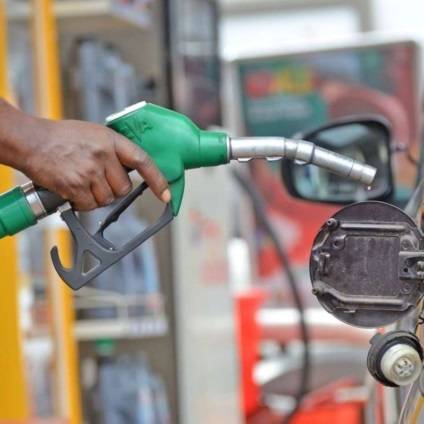
Prices of petroleum products shot up at the pumps yesterday.
This is the first increase since the introduction of the much touted ‘Gold for Oil’ policy.
Leading Oil Marketing Companies (OMCs), GOIL, Total and Shell have all increased the prices of petrol and diesel.
GOIL is selling petrol at ¢13.10 per litre and diesel at ¢12.99 per litre. Shell is also selling a litre of petrol at ¢13.10 per litre, while diesel is going for ¢12.99.
Total is, however, selling both petrol and diesel at ¢13.20 per litre respectively, while Star Oil is selling both petrol and diesel at ¢12.69 per litre.
According to myjoyonline.com, other OMCs are expected to follow suit by adjusting upwards
the prices of petroleum products at the pumps.
The upward adjustment in prices shows that petrol has gone up by a little above 5.5 per cent, and diesel by about 1.16 per cent.
The current increase in the prices of petroleum products is influenced by some significant increase of the price of crude oil and finished petroleum products on the world market.
Some energy think tanks had earlier projected that the price of petrol was expected to go up, whereas diesel and Liquefied Petroleum Gas (LPG) will decline.
The Chamber of Petroleum Consumers (COPEC) predicted a 2.01 per cent increase in the price of petrol at the retail pumps from April 16, 2023.
According to COPEC, its forecast was based on the increase in international benchmark pricing from $772.75 per metric tonne to $900.20 per metric tonne, indicating a 16.49 per cent rise. By this, the retail price of petrol works up to ¢12.41 per litre.
The Institute for Energy Security (IES) also projected that domestic fuel prices were likely to see some increment at the pumps, particularly petrol, and a marginal decrease for diesel and LPG.
“On account of international market performance observed and the domestic performance of the Ghana cedi, the IES projects prices of domestic gasoline (diesel) and LPG to decrease between 5% – 9 per cent and domestic gasoline (petrol) is forecasted to post the biggest increase of roughly 8%, in the coming weeks”.







